Forex choppiness continued overnight with DXY giving back gains and EUR bouncing:
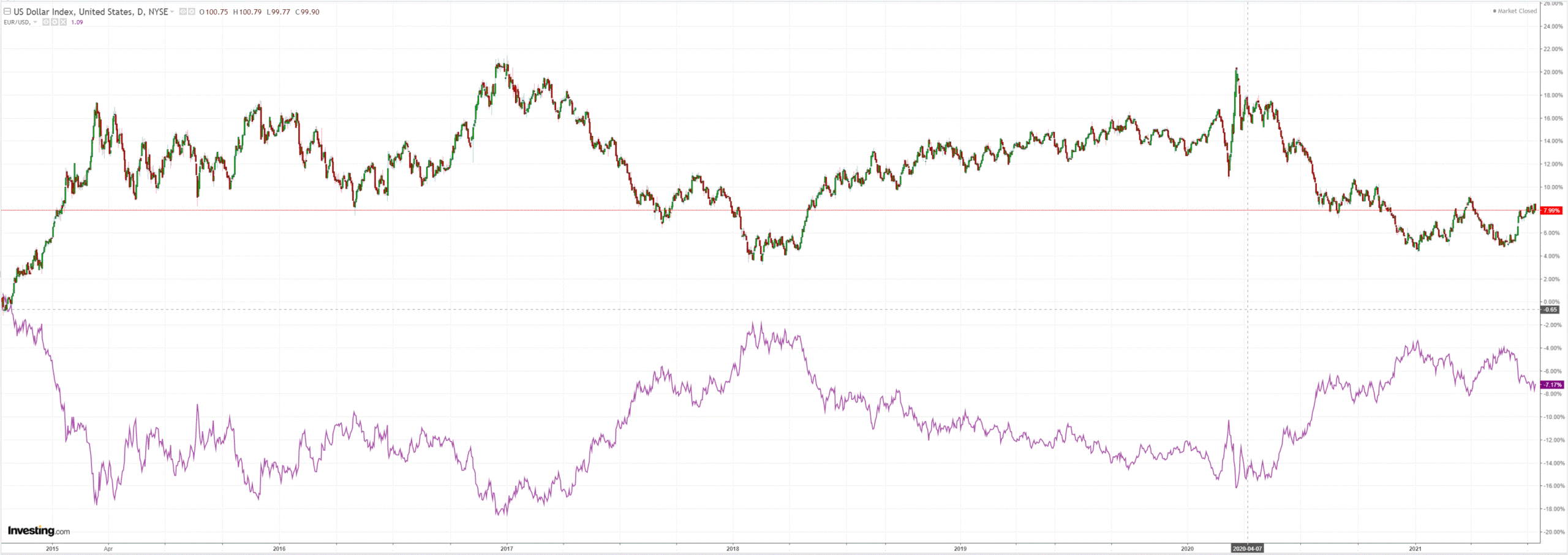
The Australian dollar repaired yesterday’s damage:
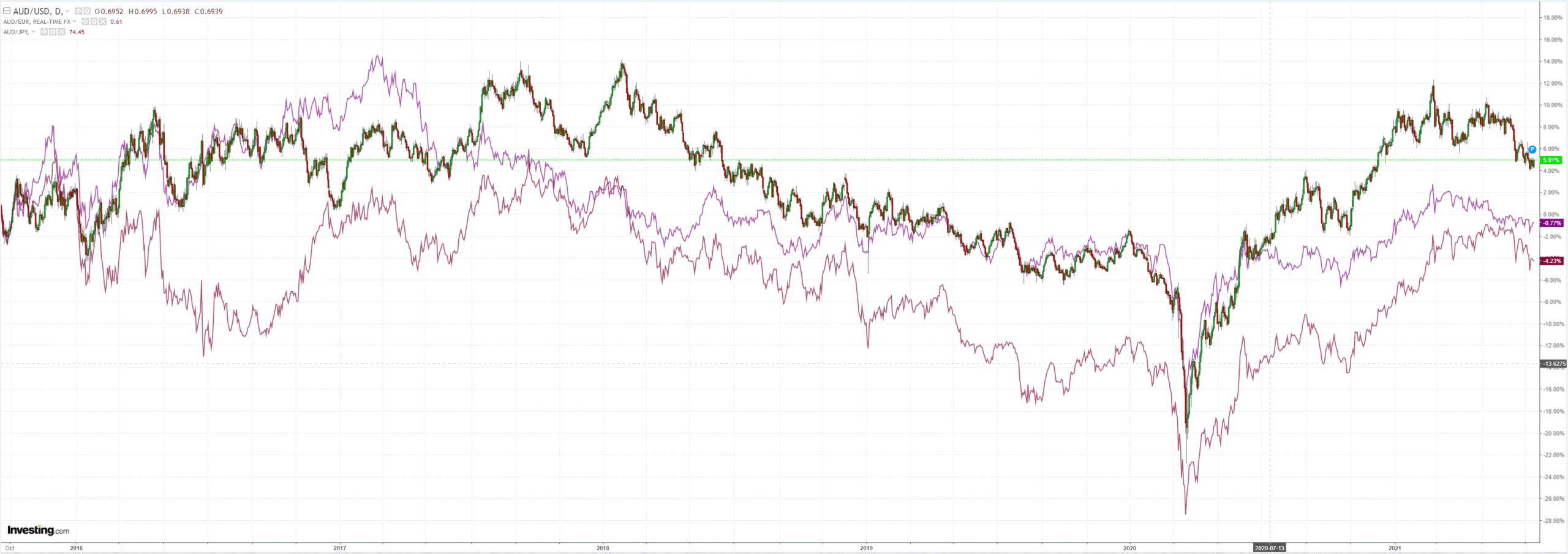
Gold was up and oil down:
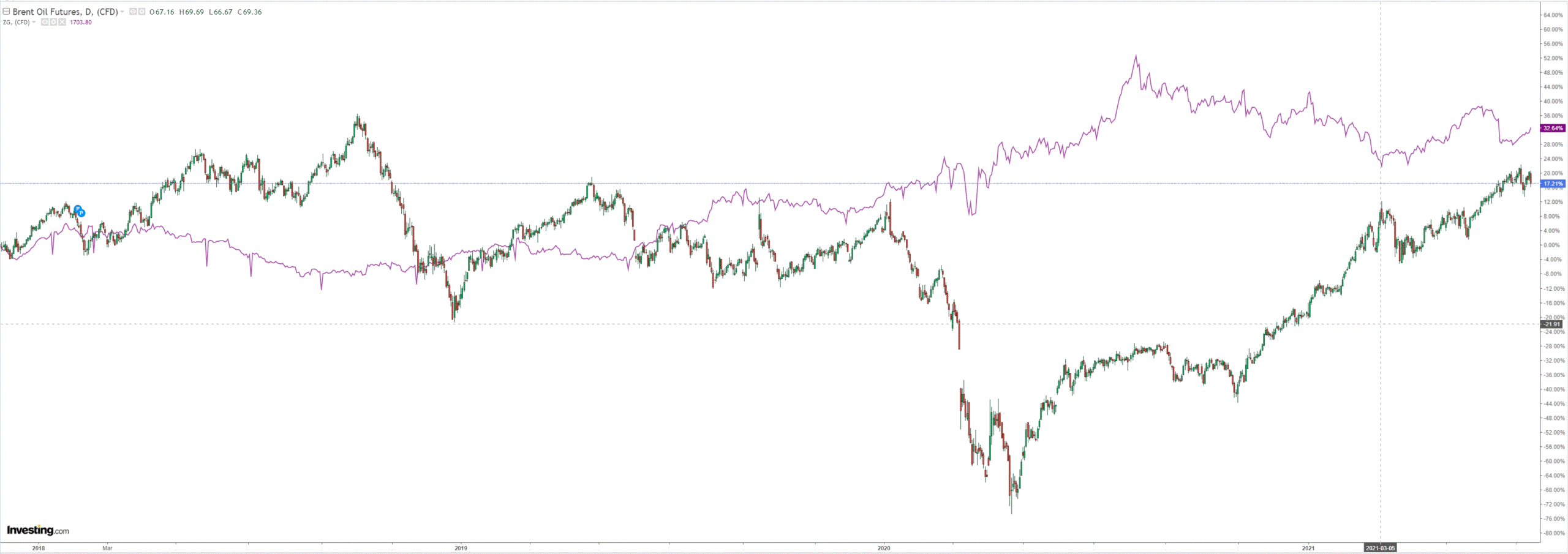
Metals fell:
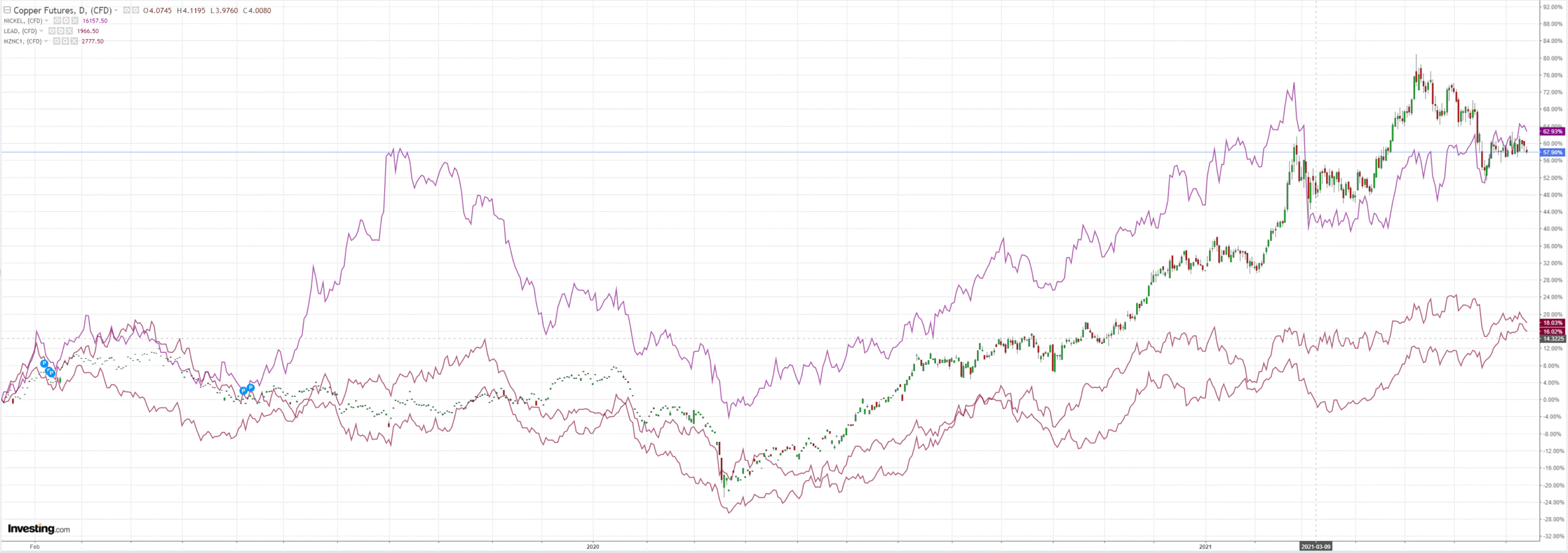
But miners lifted:
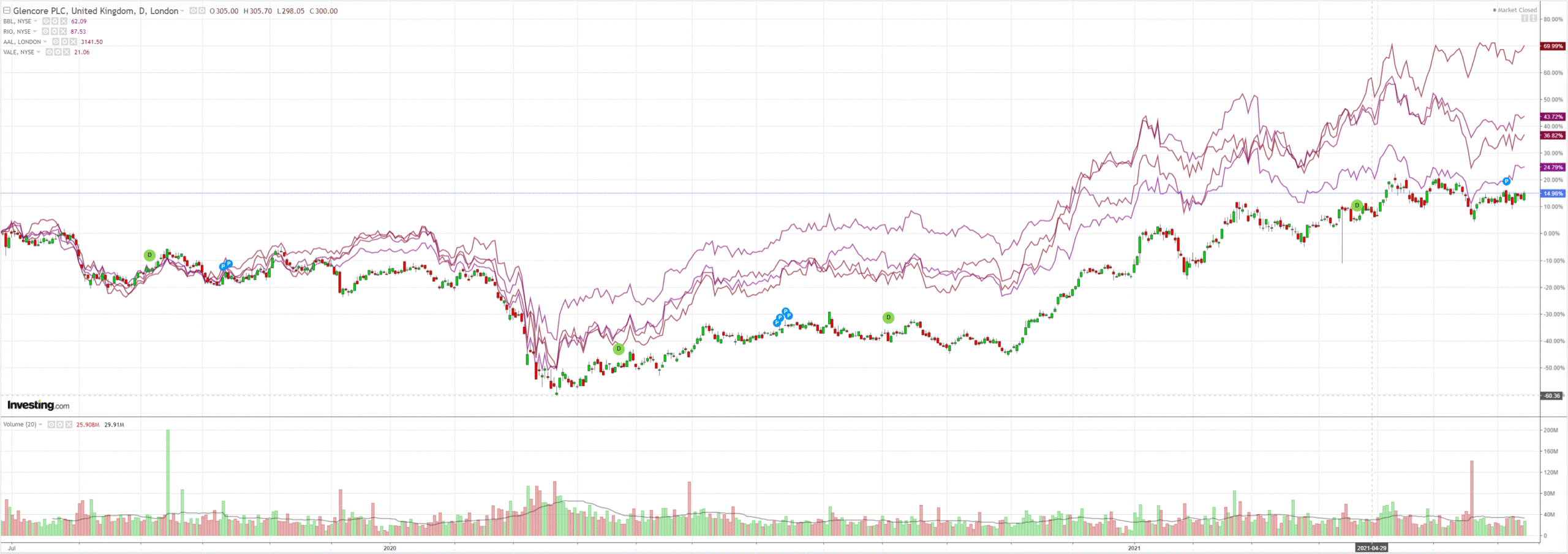
EM stocks meh:
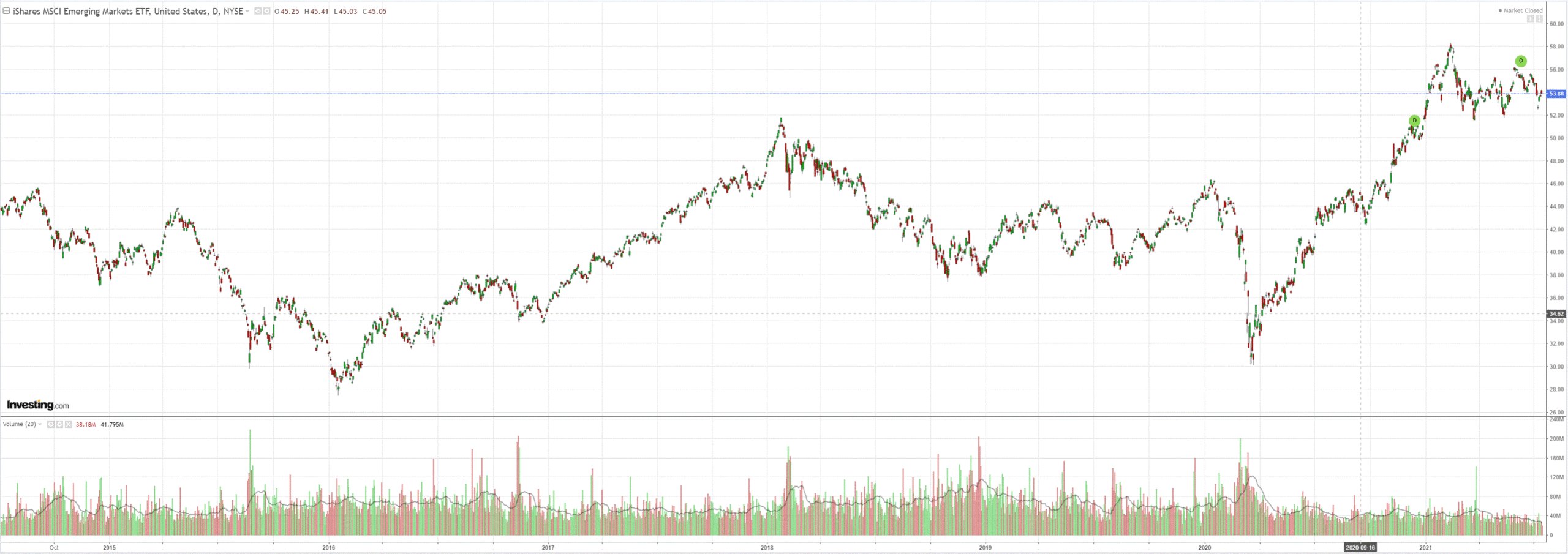
Junk rally:
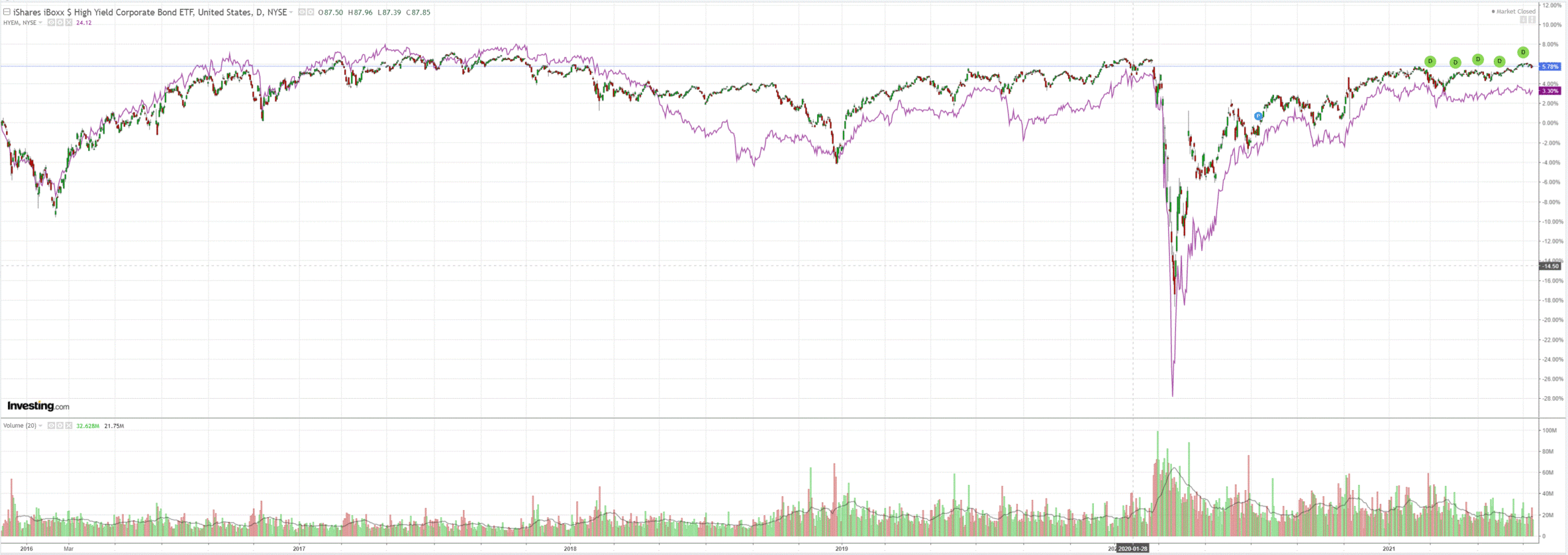
With curve smash!
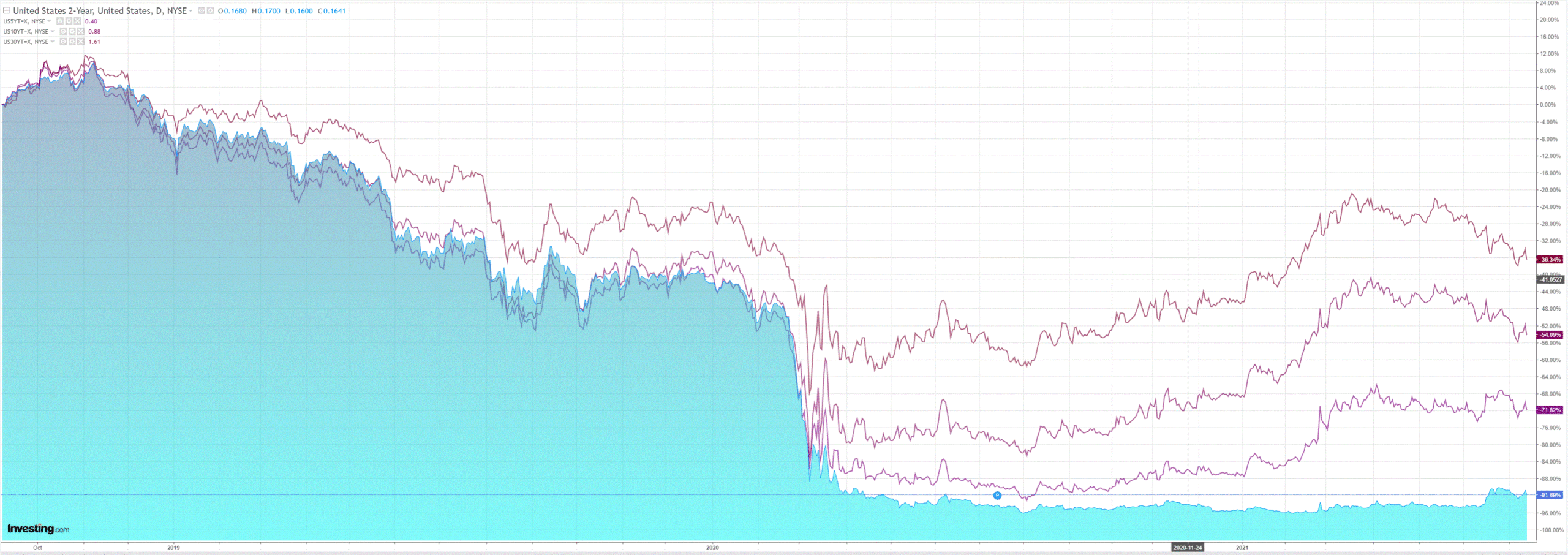
But stocks couldn’t rally:
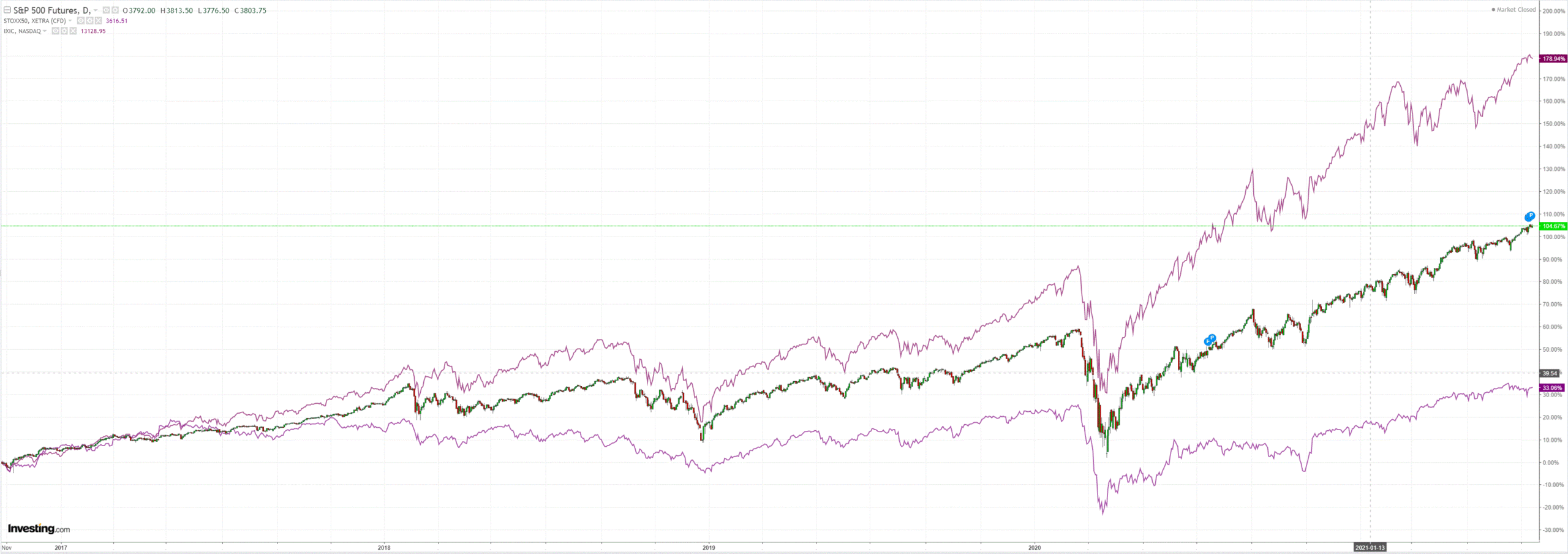
Westpac with the wrap:
Event Wrap
Fed Chair Powell’s semi-annual testimony reiterated that conditions for tightening remain distant, and that the rise in inflation is considered to be transitory. The prepared testimony said: “reaching the standard of substantial further progress is still a ways off”. Inflation has “increased notably,” acknowledged the recent update, and will remain elevated in coming months, but “temporarily boosted by base effects” as well as from “strong demand in sectors where production bottlenecks or other supply constraints have limited production” which have led to rapid price increases. These effects should partially reverse as bottlenecks unwind. On the labour market, he repeated that while “conditions have continued to improve…there is still a long way to go.”
US PPI in June was above consensus forecasts, rising 1.0%m/m to +7.3%y/y (est. +0.6%m/m and +6.7%y/y), with ex-food and energy rising 1.0%m/m (est. +0.5%m/m) to a series high (since it began in 2010).
The Fed’s Beige Book of regional economic conditions reported the economy “strengthened further” into early July, “displaying moderate to robust growth.” This is one of the most optimistic assessments for some time, and is likely a function of re-openings. Wages increased moderately, while low-wage earners saw above-average pay hikes. Labour shortages were cited as reasons firms could not staff at desired levels. Prices also increased at an above-average pace, with seven of the 12 Districts noting “strong” gains, while the remaining five saw “moderate” gains, and “While some contacts felt that pricing pressures were transitory, the majority expected further increases in input costs and selling prices in the coming months.”
Bank of Canada further reduced its weekly bond purchasing to CAD2bn (from the reduction to 3bn announced in April) ,as their confidence in Canada’s economic outlook increased.
However, BoC also spoke of the moderation in domestic housing (an earlier catalyst for tapering) and Covid 3rd-wave concerns, while still expecting vaccination progress to allow for H2’21 growth of 6% (from 6.5% in April), lifting the growth projection for 2022 (to 4.5% from 2.75%) and 2023 (to 3.25%). Th BoC also revised up potential output, thus increasing capacity and slack in the economy, and re-iterating that it would maintain accommodation until the slack is absorbed.UK CPI in June was stronger than expected: +0.5%m/m to 2.5%y/y (est. +0.2%m/m and +2.2%y/y), with core also firming to +2.5%y/y.
BoE Dep. Gov. Cunliffe flagged the potential for upside inflation pressures ahead of the August MPC meeting, while also saying that the current strength is expected to be transitory (dependent upon how long the surge in demand lasts). The MPC will receive updated economic projections in their Monetary Policy Review when they meet in August.
EU industrial production for May missed consensus with a fall of 1.0%m/m (est. -0.3%m/m). Though this was largely a reflection of lower national level releases, it continues the string of sluggish regional data recently.
Event Outlook
Australia: The ABS will publish the June labour force survey. June Weekly Payrolls confirmed a recovery from the May Vic lockdowns, and the Labour Force survey was conducted too early to pick up NSW lockdown. Payrolls point to a 0.2% fall in original terms but is likely to be revised up. Our 45k forecast (market +20k) for employment is consistent with a flat print in original terms. The recovery in employment has also seen participation surge to a record high – outsized growth in female employment drawing a lot more women into the workforce. Meanwhile, there is a bit of a mismatch of new male jobs compared to where many of the job losses occurred, suggesting new entrants into the workforce are taking a sizable portion of the new jobs. We forecast a new record participation rate of 66.3%, limiting the fall in unemployment to 0.1ppt to 5.0%. Ahead of the July update, June inflation expectations printed the largest monthly increase in 4 years.
China: We are looking for Q2 GDP to advance 8.3%yr; the quarterly read is likely to be a touch below trend. Alongside this, we get the June partials: retail sales (market f/c: 22.8%yr ytd), industrial production (market f/c: 16.0%yr ytd) and fixed asset investment (market f/c: 12.0%yr ytd).
UK: The May ILO unemployment rate is expected to hold at 4.7%, with the furlough scheme providing ongoing support for the labour market.
US: Initial jobless claims are expected to take a further leg down to 350k in the week ending July 1; momentum should pick up in coming months as employment benefits roll off. June industrial production is expected to advance 0.6%, with output forging ahead on robust consumer spending. Two regional surveys, the Fed Empire State index (market f/c: 18.0) and the Philly Fed index (market f/c: 28.0) will give insight into the status of bottlenecks, upstream price pressures, and employment growth. Fed Chair Powell will deliver the second of his semi-annual testimonies, this time to the Senate Banking Committee. The FOMC’s Evans will discuss the economy.
A note from Credit Suisse seems to sum up where we’re at:
FX markets remain in a jittery “wait and see” mode, with limited appetite for establishing new positions clashing with the shifting narrative around Covid-19 risksand with flow-driven corrections in closely related markets, such as US rates. This leaves FX markets roughly in a similar place to where they were a week ago, with the broad USD index trading near the highs of the tight post-FOMC range, but failing so far to break decisively higher.
Our overall view on FX since our latest Global FX Outlook (link) has been that a clear and broad directional shift in the USD would remain elusive in Q3: the events of the past few days do not give us strong reasons to question this view. Within the context of this fairly agnostic USD view, selected recent development show ever appear to be reinforcing the perception of a “floor” in the USD against low-yielding currencies. These include further strength in US CPI data, and to a lesser extent, the ECB strategy review. Expectations around the implementation of the latter in the upcoming ECB rate decision on 22 July create marginal further tactical EURUSD downside risk: we as such lower the target level of our outstanding EURUSD short position from 1.1770 to 1.1705. Against pro-cyclical currencies, we continue to anticipate a fairly dispersed USD performance: we expect today’s BoC rate decision to benefit CAD.
We continue to target EURNOK at 10.00 by the end of Q3, and think that rallies in EURNOK towards the Q1 highs around 10.48 will offer attractive entry points for new shorts. Meanwhile, we expect the recent very rangebound price action in EURSEK to persis tin the near-term, and maintain a 10.10medium-term target. We stay constructive on RUB but opt to slightly raise our short-term USDRUB target to 72.00 (from71.00). We would be biased to sell USDRUB on spikes above 76.00 if they do not take place in a context of a sizable drop in oil prices. We also raise our short-term USDZAR target range to 14.40-14.95 (from 13.60-14.40 previously) after the rand has been hit by adverse South-Africa-specific developments this week.
Whether by the hand of a growth slowdown and safe-haven bid on a market correction. Or by the hand of fiscally-led US exceptionalism, I remain comfortable with the view that we are in a long term USD bull market.

